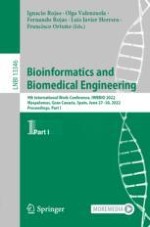2022 | OriginalPaper | Buchkapitel
The Role of Astrocytes in Alzheimer’s Disease Progression
verfasst von : Swadesh Pal, Roderick Melnik
Erschienen in: Bioinformatics and Biomedical Engineering
Aktivieren Sie unsere intelligente Suche, um passende Fachinhalte oder Patente zu finden.
Wählen Sie Textabschnitte aus um mit Künstlicher Intelligenz passenden Patente zu finden. powered by
Markieren Sie Textabschnitte, um KI-gestützt weitere passende Inhalte zu finden. powered by
